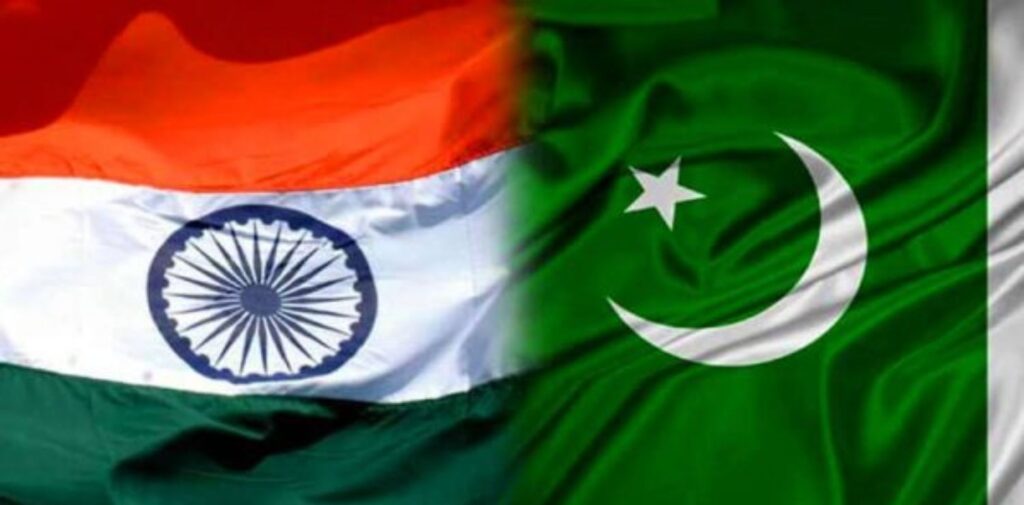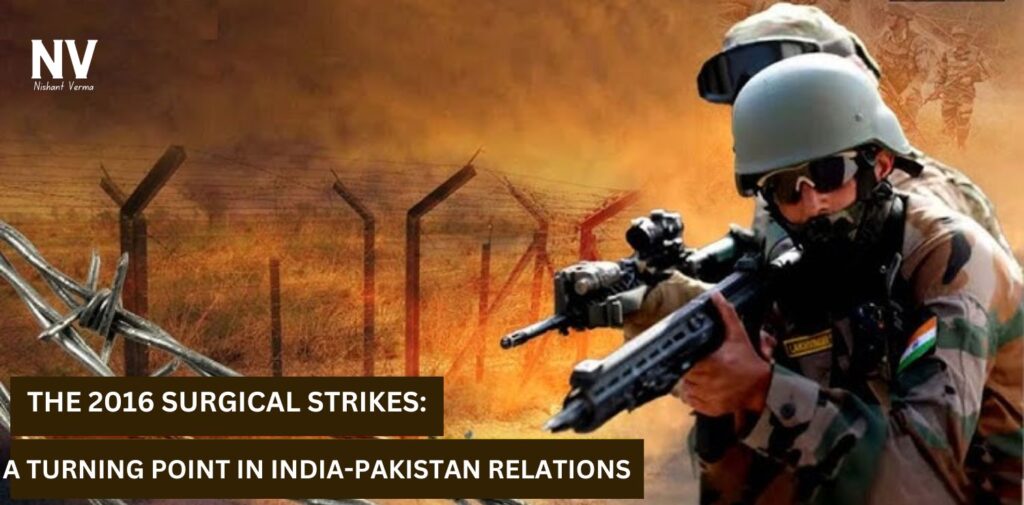The relationship between India and Pakistan has been a complex and often tense one, marked by several wars, territorial disputes, and a history of conflict. One of the most significant events in this ongoing conflict occurred in 2016, when India conducted surgical strikes on terrorist launch pads in Pakistan-occupied Kashmir. These strikes marked a turning point in the way both countries engaged with each other, and their impact is still being felt today.
This article will explore the events surrounding the 2016 surgical strikes, why they were a turning point in India-Pakistan relations, and their lasting effects on the geopolitical landscape of the region.
1. What Were the Surgical Strikes?
The term “surgical strike” refers to a military operation that is precise and targeted, designed to minimize collateral damage while achieving specific objectives. On September 29, 2016, the Indian Army carried out such a strike against terrorist launch pads across the Line of Control (LoC) in Pakistan-occupied Kashmir (PoK). This came in retaliation to a terrorist attack on an Indian Army base in Uri, Jammu and Kashmir, on September 18, which killed 19 Indian soldiers.
Following the Uri attack, which was blamed on militants supported by Pakistan, the Indian government decided to take direct military action to dismantle the terrorist infrastructure along the LoC. The operation, which was conducted under the cover of darkness, reportedly involved special forces infiltrating across the LoC to destroy terrorist camps and eliminate the militants housed there.

2. Background: Tensions Between India and Pakistan
India and Pakistan have had a turbulent relationship since their independence in 1947. The two countries have fought several wars, primarily over the disputed region of Kashmir. Additionally, both countries have experienced numerous terrorist attacks, some of which have been traced back to Pakistani-based terrorist groups.
In the years leading up to the 2016 surgical strikes, the relationship between India and Pakistan had become particularly strained. Terrorist attacks such as the 2001 attack on the Indian Parliament, the 2008 Mumbai attacks, and multiple incidents in Kashmir heightened tensions between the two nations. While India blamed Pakistan for harboring and supporting these terrorist groups, Pakistan denied these allegations.
The Uri attack in 2016, where militants infiltrated an Indian Army base and killed 19 soldiers, was seen as a direct challenge to India’s sovereignty and security. This event marked a critical moment in India-Pakistan relations, prompting India to take decisive military action.
3. The Decision to Conduct Surgical Strikes
The decision to carry out the surgical strikes was made after a series of deliberations between Indian military leaders, the government, and Prime Minister Narendra Modi. Unlike previous instances when India had chosen to respond to provocations with diplomatic measures or limited military actions, the 2016 strikes were seen as a more aggressive, proactive response.
One of the key reasons behind the surgical strikes was to send a strong message to Pakistan that India would no longer tolerate cross-border terrorism. For years, India had been pressing Pakistan to take action against terrorist groups operating from its soil, but the Pakistani government had either denied involvement or failed to take meaningful action. The surgical strikes were India’s way of asserting its right to defend itself and respond forcefully to any threat.
Another important factor was the desire to avoid full-scale war. By conducting a precise and targeted operation, India was able to strike at terrorist infrastructure without escalating the conflict into a broader war. This strategy aimed to achieve military objectives while minimizing the risk of retaliation from Pakistan.

4. Impact on India-Pakistan Relations
The 2016 surgical strikes marked a significant shift in India-Pakistan relations. In the past, both countries had engaged in tit-for-tat responses, with India occasionally retaliating through limited military strikes or diplomatic protests, and Pakistan responding similarly. However, the surgical strikes were different in several key ways.
a. Diplomatic Fallout
The strikes immediately increased diplomatic tensions between India and Pakistan. Pakistan denied that the strikes had taken place and accused India of fabricating the event. However, India maintained that the strikes were a legitimate military response to terrorism. This public disagreement fueled the already tense relations between the two countries.
India also used the surgical strikes to rally international support, emphasizing its right to self-defense and calling attention to Pakistan’s role in harboring terrorists. The global community, particularly the United States and other Western nations, largely supported India’s right to defend itself, though they called for restraint to avoid further escalation.
b. Military Posturing
The surgical strikes also signaled a shift in military posturing in the region. For decades, India had adhered to a strategy of “strategic restraint,” which involved avoiding direct military action unless absolutely necessary. The 2016 strikes, however, represented a departure from this approach and demonstrated India’s willingness to take preemptive action to protect its interests.
This shift in military strategy was particularly significant given that both India and Pakistan possess nuclear weapons. While the risk of a full-scale war was still present, the surgical strikes highlighted India’s ability to carry out military operations without immediately resorting to conventional warfare.
c. Pakistan’s Response
Pakistan, while denying that the surgical strikes had taken place, was forced to confront the growing pressure from both within and outside the country regarding its role in supporting terrorist groups. In the aftermath of the strikes, Pakistan attempted to de-escalate tensions by calling for dialogue with India, but the trust between the two nations had already been severely damaged.
Additionally, Pakistan’s military and political leadership began to reassess its approach to militancy. Although the Pakistani government continued to deny direct involvement in terrorism, it faced increasing international pressure to curb the activities of groups operating from its territory.

5. Long-Term Consequences of the Strikes
The 2016 surgical strikes had far-reaching consequences for both India and Pakistan. While the immediate aftermath was marked by heightened tensions and military posturing, the long-term effects of the strikes were felt in various ways.
a. Strengthened India’s Position
The strikes significantly boosted India’s international standing, showcasing its resolve to protect its sovereignty and take action against terrorism. The successful execution of the operation enhanced India’s credibility as a rising global power capable of defending its interests. It also served as a reminder that India would not hesitate to respond to any security threat, further cementing its image as a regional leader.
b. Domestic Political Impact
The surgical strikes also had a significant political impact within India. Prime Minister Modi’s leadership during the operation was widely praised, and the strikes became a symbol of his government’s strong stance on national security. The operation was seen as a response to years of frustration over Pakistan’s support of terrorism, and it strengthened the perception that the Indian government was willing to take bold action to ensure the safety of its citizens.
c. Increased Security Measures
Following the strikes, India increased its focus on enhancing its border security, counter-terrorism operations, and intelligence capabilities. The success of the surgical strikes demonstrated the importance of maintaining strong military preparedness and the need for a well-coordinated intelligence network to prevent future attacks.
Conclusion: The 2016 Surgical Strikes
The 2016 surgical strikes were a significant turning point in India-Pakistan relations. They marked a shift in India’s approach to dealing with cross-border terrorism, moving from diplomatic protests and limited military responses to direct and targeted action. While the strikes did not lead to an immediate resolution of the Kashmir issue or bring lasting peace to the region, they highlighted India’s determination to protect its sovereignty and security.
The impact of the surgical strikes continues to be felt in the ongoing India-Pakistan conflict. They altered the dynamics of the region and set a precedent for India’s future military responses to terrorist threats. While the situation between the two countries remains tense, the 2016 surgical strikes served as a reminder that India is willing to take bold actions to safeguard its interests on the global stage.




